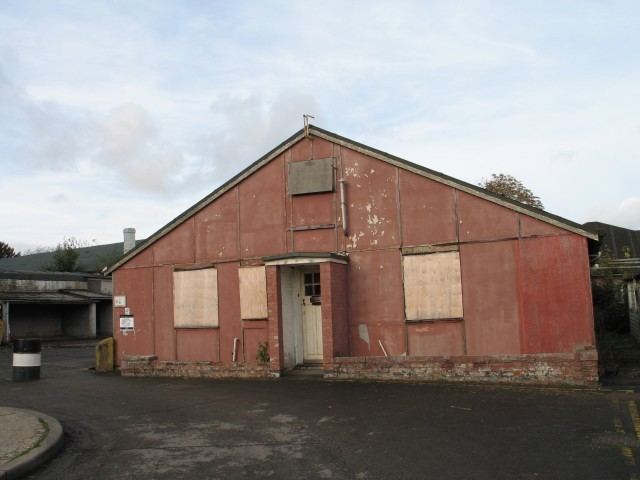 | ||
Hut 3 was a wartime section of the Government Code and Cypher School (GC&CS) at Bletchley Park tasked with the translation, interpretation and distribution of German Army (Heer) and Air Force (Luftwaffe) messages deciphered by Hut 6. The messages were largely encrypted by Enigma machines.
Contents
Location
Located initially in one of the original single-story wooden huts, the name “Hut 3” was retained when Huts 3, 6 & 8 moved to a new brick building, Block D, in February 1943. Then the decodes from Hut 6 for Hut 3 which had been sent in a wooden tray from one hatch to another via a wooden tunnel between the huts were sent from the Hut 6 Decoding Room by a conveyor belt that “never stopped”
Operation
The Enigma “Red” cypher was the main cypher used by the Luftwaffe in every theatre where they operated. Red had been broken sporadically from the beginning of 1940, and from 22 May BP overcame some changes to the Enigma machines. From then on, Hut 6 broke Red daily to the end of the war, and it became the “constant staple” of ULTRA. Calvocoressi wrote that later in the war “we in Hut 3 would get a bit tetchy if Hut 6 had not broken Red by breakfast time.”
Initially there were only four people in Hut 3, and there were serious personal frictions between them. They were the original leader, Lieutenant-Commander Malcolm Saunders, Squadron Leader Robert Humphreys (senior liaison officer with the Air Force), Captain Curtis (senior liaison officer with the War Office, who knew no German), and Cambridge academic F. L. Lucas who had been in the Intelligence Corps in World War I. Humphreys was “an excellent German linguist, but no team player. He wanted to get his own way. He found this difficult to do if only because Saunders had a mind of his own. Nigel de Grey described the situation as 'an imbroglio af conflicting jealousies, intrigues and differing opinions'. Initially Travis moved the three [Saunders, Humphreys and Curtis] out of Hut 3 and put a small committee including Eric Jones in charge. As this did not work, Jones was made sole head in July 1942. Just over a year after he took over, H. S. Marchant was made his deputy, and the pair were in charge to the end of the war.”
Army and Air Force Ultra was distributed by the SLUs (Special Liaison Units)] set up by Frederick Winterbotham. By the end of the war there were about 40 SLUs to 40 commands. Signals were given a priority from Z to ZZZZZ (the highest of 5), and about 100,000 signals were sent to commands during the war
The rules of interpretation for Hut 3 were that if the text was not explicit the Hut 3 officer could not add his interpretation without qualification; for a 1944 SS Panzer message where the placename had been missed or corrupted when received, the officer did not say simply “Dreux” but would say “slight indications Dreux” or “fair indications Dreux” or “strong indications Dreux”. They could also add glosses preceded by the word “Comment”.
The Air Index had “hundreds of thousands” of cards about 5 by 9 inches; so important that they were photographed and stored in the underground stack of the Bodleian Library in Oxford in case they were destroyed by bombing. Run by “about two dozen girls” and a man who was a “strange genius”, it had cards for every individual, unit, place or equipment so that any previous reference to (say) Major So-and-So could be found. There were two card indexes, 3A & 3M.
Personnel
A photograph of the Officers of 3A in 1943 or 1944 names them as: Labertouche, Brooke, Faure, Newton-John, Haskins, Bragg, Ware, Squire, Calvocoressi, van Norden, Harrow, Myers, Pilley, Manners-Wood, Rose, Cullingham, Millward.
